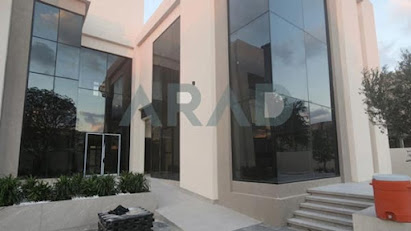Embracing the Architectural Marvel: Exploring the Curtain Wall View
Introduction: In the realm of modern architecture, few elements captivate the imagination quite like the curtain wall. This ingenious structure not only serves as a boundary between interior and exterior spaces but also embodies a testament to human ingenuity and technological advancement. The curtain wall view offers a unique perspective, inviting us to delve into its history, evolution, and the aesthetic and functional roles it plays in contemporary architecture.
Origins and Evolution: The concept of the curtain wall dates back centuries, with early examples found in ancient civilizations such as Egypt and Rome. However, it wasn't until the late 19th and early 20th centuries that advancements in materials and construction techniques paved the way for the modern curtain wall as we know it today. Innovations in steel and glass production, coupled with the rise of skyscrapers, led to the widespread adoption of curtain walls in commercial and residential buildings around the world.
Aesthetic Appeal: One of the most striking aspects of the curtain wall view is its aesthetic appeal. Characterized by expansive glass panels framed by sleek metal or concrete structures, curtain walls offer a sense of transparency and lightness, blurring the boundaries between indoor and outdoor spaces. Architects often use curtain walls to create visually stunning facades that reflect the surrounding environment and capture natural light,
resulting in buildings that appear to float ethereally against the skyline.
Functional Significance: Beyond their visual allure, curtain walls serve several important functional purposes. By acting as an external envelope, they provide protection from the elements while allowing for ample natural light and ventilation, thus reducing the need for artificial lighting and climate control systems. Additionally, curtain walls can enhance
energy efficiency by insulating buildings and minimizing heat transfer, contributing to sustainability efforts in architecture and design.
Technological Innovations: Advancements in technology continue to push the boundaries of what is possible with curtain wall construction. From the development of high-performance glass coatings to the integration of smart sensors and automation systems, architects and engineers are constantly refining and improving upon the design and functionality of curtain walls. These innovations not only enhance the performance and
durability of buildings but also open up new possibilities for creative expression and customization in architectural design.
Challenges and Considerations: While curtain walls offer numerous benefits, they also present certain challenges and considerations for architects and developers. Issues such as thermal bridging, air and water infiltration, and maintenance can arise if proper design and
installation protocols are not followed. Additionally, the increasing prevalence of extreme weather events and climate change necessitates careful attention to resilience and durability in curtain wall construction.
Future Directions: Looking ahead, the curtain wall is poised to remain a cornerstone of modern architecture, with ongoing research and development driving further innovation in design and construction techniques. As sustainability and resilience become increasingly important considerations in building design, curtain walls will continue to evolve to
meet the demands of a changing world. Whether serving as a symbol of progress and innovation or as a canvas for artistic expression, the curtain wall view will continue to inspire awe and admiration for generations to come.
Conclusion: In conclusion, the curtain wall view represents a convergence of art, science, and technology in the realm of architecture. From its humble origins to its current status as a defining feature of contemporary buildings, the curtain wall embodies the spirit of human creativity and ingenuity. As we continue to push the boundaries of what is possible in architectural design, the curtain wall will undoubtedly remain a source of inspiration and
fascination for architects, engineers, and admirers alike.





Comments
Post a Comment